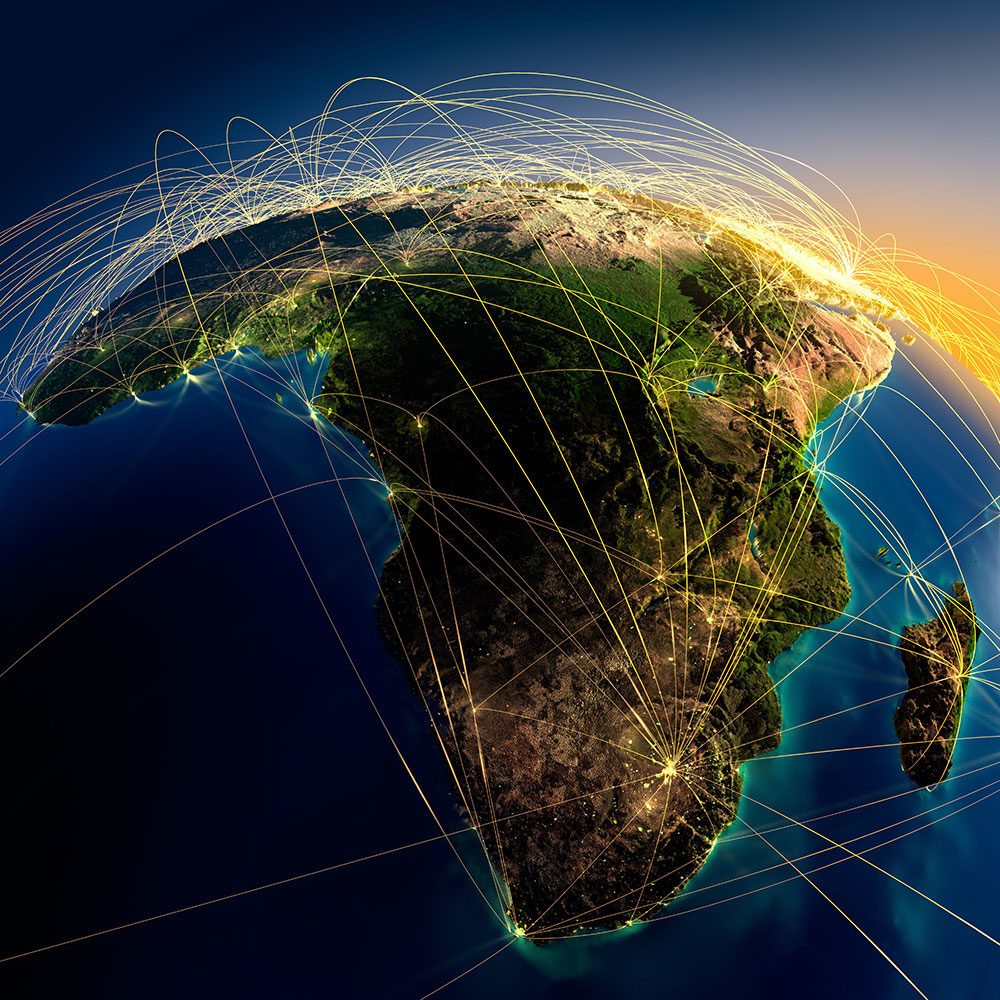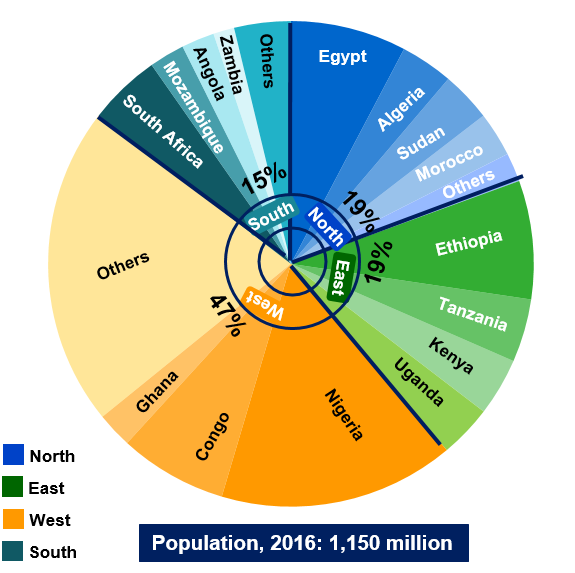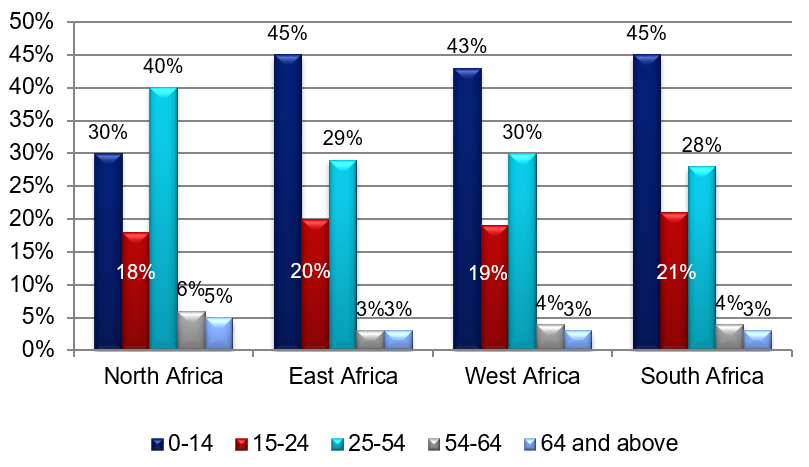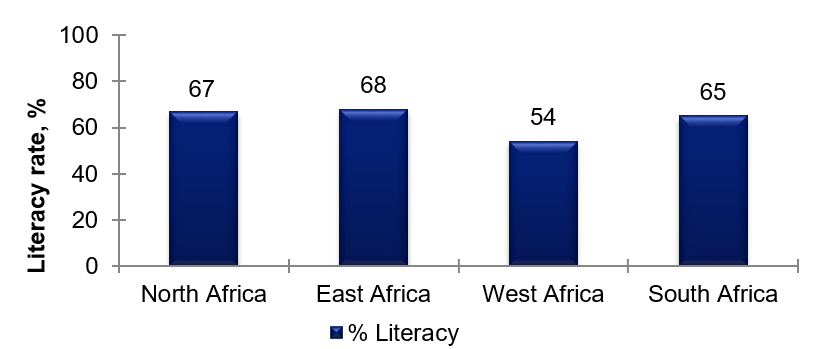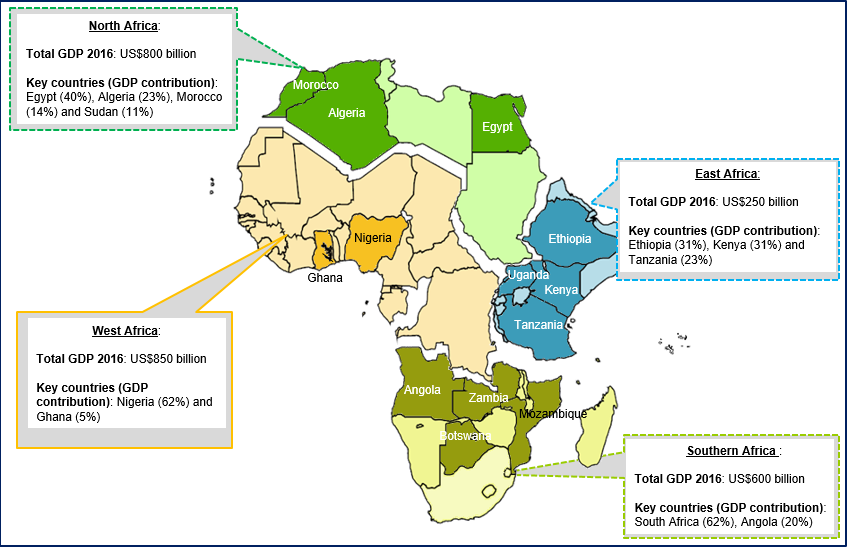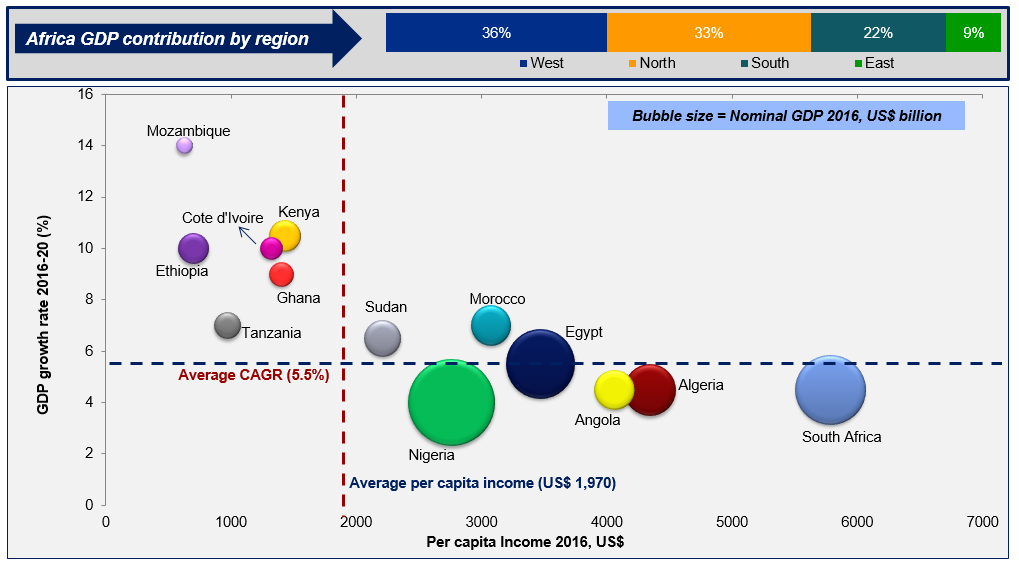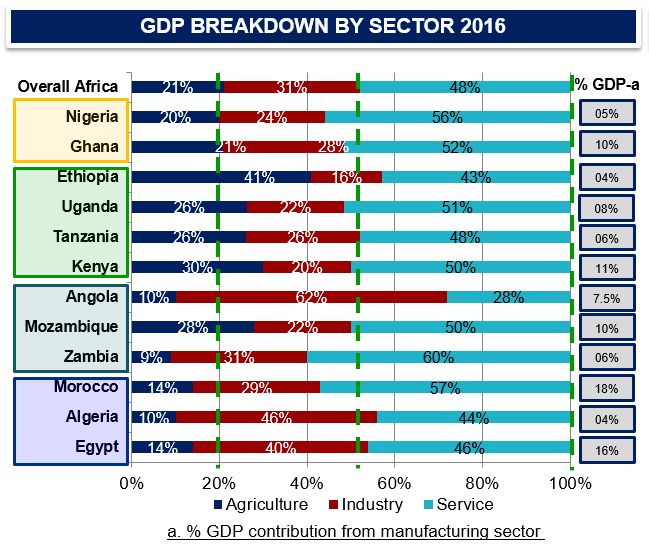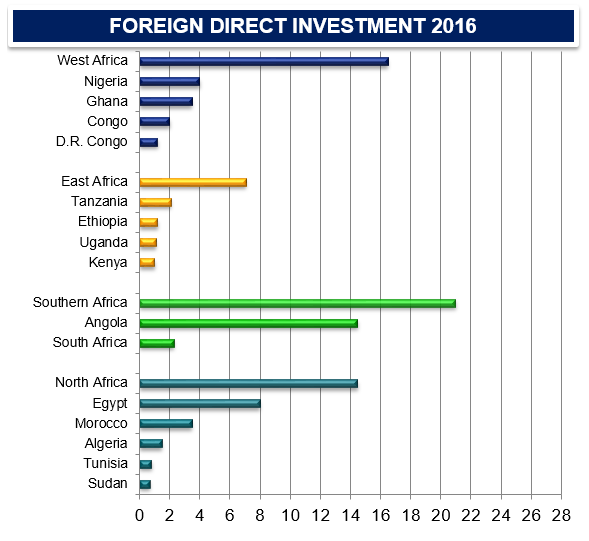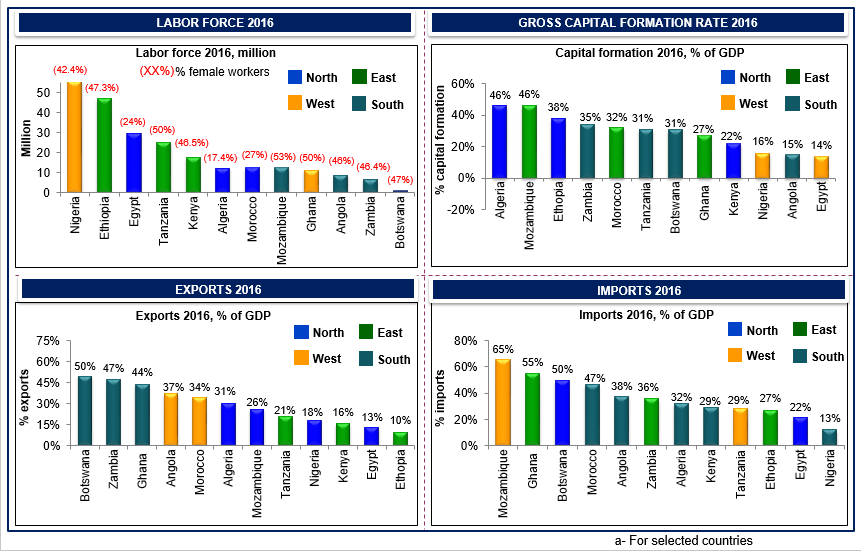Africa – Demographic Overview
Population Overview By Region, 2016
- Total population in Africa is estimated at around 1.15 billion in 2016, and is forecast to reach to ~1.25 billion by 2020
- West Africa is the most populous region with 47% of total population, followed by East and North Africa at 19% each
- Africa is expected to witness the world’s largest population growth up to 2050, expected to reach 2.3 billion by that year
Source: IMF, World Bank, SAI’s non-confidential databases
Africa – Economic Overview
- Africa’s overall GDP in 2016 was US$2.5 trillion and is expected to grow at ~5% CAGR to US$3 trillion by 2020
- South Africa, Nigeria, Egypt, Algeria, Morocco and Angola are the top six countries driving economic growth in Africa
Source: IMF, World Bank, SAI’s non-confidential databases
- With overall GDP CAGR of around 5-6% projected over the next 4-5 years, Africa continues to emerge as an important destination for international business and foreign investment
- Relative attractiveness of key countries is placed below
Source: IMF, World Bank, SAI’s non-confidential databases
GDP Breakdown By Sector
- Africa has abundant natural resources including oil, diamonds, gold, iron, cobalt, uranium, copper, bauxite and others
- Overall, service sector accounted for around 48% of total GDP, followed by industry at 31% and agriculture at 21%
- Angola, Algeria and Egypt have highest contribution of industry to GDP, while contribution of agriculture is most significant in Ethiopia
- Service sector contributes to more than half of GDP in Zambia, Morocco , Ghana, Uganda, Kenya, Mozambique and Nigeria
Foreign Direct Investment, 2016
- Total FDI in Africa is estimated at ~US$59 billion in 2016. FDI Inflows to the continent remain unevenly distributed, with five countries (Angola, Egypt, Nigeria, Ghana and Ethiopia) accounting for 57% of the total
- FDI inflows to Africa are expected to increase in 2017, to $65 billion, in view of modest oil price rises and potential upturn in non-oil FDI. Growing regional integration drives Africa’s competitive global integration and encourages stronger FDI
Africa – Other Key Macro Indicators – a
- Exports from Africa were an estimated US$325 billion in 2016, while imports were around US$460 billion. Increasing investments in manufacturing sector are expected to provide significant boost to capital formation, especially in West and North Africa
Source: World Bank, TradeMap, UNData, SAI’s non-confidential databases

